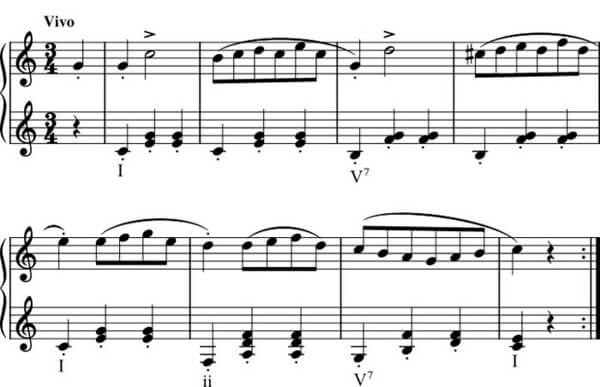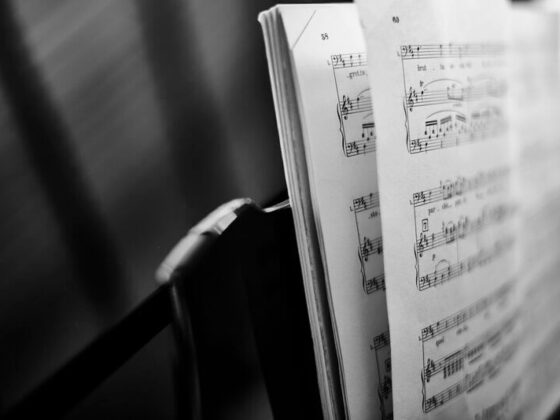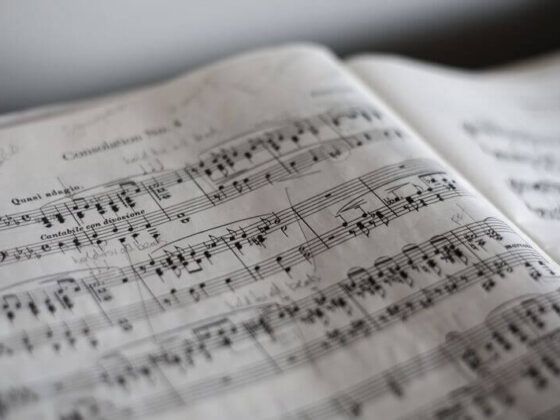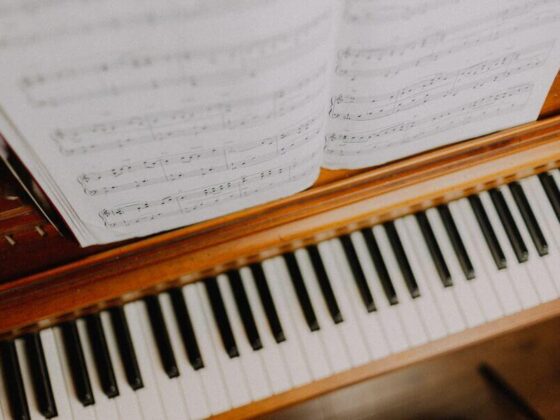In my many years of offering piano lessons for adults, I’ve found that most adult piano students want to understand music better. (The more-intimidating term for such study is “music theory.”) One of the most interesting aspects of music theory is chords – their construction and progression.
While the rules and conventions for constructing chords and chord progressions can (and do) fill textbooks, fortunately, the basics are relatively easy to learn. This article will give you a springboard from which you can dive deeper into this fascinating topic.
What is Tonal Music?
The kind of chords most people are familiar with are used in tonal music. Tonal music broadly includes much (especially Western) folk music, popular music as most people know it, and the classical music composed before the early 20th century.
Tonal music has a “center of gravity” based around a single note, the tonic or “home note.”
The melody and harmony (chords) of a piece of tonal music all have a relationship to the tonic.
What is the Major Scale?
A scale is a series of tones, usually a sequence of half and whole steps. The tonic of a piece of music is the first note of a scale.
The most commonly-used scale in tonal music is the major scale. A major scale can be derived by playing any key on the piano, then ascending by whole steps (W) and half steps (H) as follows:
W-W-H-W-W-W-H
For example, the C major scale is constructed by applying the above formula starting on C:

Arabic numerals identify the sequence of notes in a scale. These are called scale degrees:

As you’ve learned, the first note (1) of a scale is the tonic. A scale is named after its tonic.
The fifth note of a scale is the dominant.
These two scale degrees (tonic and dominant) and the chords built on them are fundamental to chord progressions in tonal harmony.
What are Diatonic Chords?
In tonal music, the basic chords are formed from the notes of a scale. Such chords are called diatonic.
The diatonic chords are ordinarily shown in the order of an ascending major scale and labeled with Roman (rather than Arabic) numerals. The seven most-common diatonic chords constructed from the C major scale are:

Notice that all the above chords have three notes except for the chord built on the dominant (5), the V7 chord, which has four notes. Four-note chords can be constructed on any scale degree. But the above chords are enough to begin understanding how chord progressions work.
How Do Chord Progressions Function in Tonal Music?
A chord progression is a sequence of chords with a goal (i.e. it’s a series of chords that is progressing towards something). The goal of most chord progressions is the tonic chord (I).
The Tonic Chord
Most tonal music begins and ends with the tonic (I) chord. It’s rather like taking a journey – you start from home (the tonic chord), go on a voyage that includes other chords, then return home to the tonic chord.
The Dominant Chords
Most often, the tonic chord is preceded by a dominant chord. The function (purpose or goal) of a dominant chord is to push the music towards the tonic. There are actually two diatonic chords that have a dominant function: V7 and viio. (It’s true that only V7 is built on the dominant of the scale, but this is a different concept.)
The Pre-Dominant Chords
What about all the other chords that aren’t tonic (I) or dominant (V7, viio) chords? Music theorists technically call these the pre-dominant chords, because they typically precede the dominant chord in a chord progression.
The pre-dominant diatonic chords are ii, iii, IV and vi.
What Is the Usual Progression of Diatonic Chords in Tonal Music?
The ultimate goal of tonal chord progressions is the tonic chord (I). This is true for the end of a piece but is typically also the case for shorter subdivisions of a piece, such as phrases, sections, etc. Therefore, even in a short piano piece like a Mozart minuet, the tonic chord may appear multiple times.
Let’s break this down.
As you’ve learned, the beginning of a tonal piece typically begins with the tonic chord (I) (though like most things in life, there are exceptions to this and every convention of tonal harmony):
I → ?
The ? means that I may be followed by any other diatonic chord (ii, iii, IV, V7, vi or viio). For example, I may progress to vi:
I → vi
Or it could progress to IV:
I → IV
What happens next? Each of the other diatonic chords is normally followed by certain other chord(s), as shown in this table:
| Diatonic Chord Progressions |
| III → vi or IV |
| vi → IV or ii |
| IV → ii or viio or V7 or I |
| ii → viio or V7 |
| viio → V7 or I |
| V7 → I or vi (V7 to vi is called a “deceptive progression,” but that’s a story for another day) |
| I → ? (any chord) |
Confused? Let’s create a chord progression from scratch using the above table. We’ll begin our progression with I, as is usually the case:
I
Remember, I can be followed by any other diatonic chord. We’ll choose V7:
I → V7
Referencing the table above, V7 is usually followed by I or vi. Let’s follow it with I:
I → V7 → I
I can be followed by any chord, so let’s choose ii for something different:
I → V7 → I → ii
Per the table, ii is usually followed by viio or V7. Let’s choose V7 again:
I → V7 → I → ii → V7
Let’s follow V7 with I again:
I → V7 → I → ii → V7 → I
Simple, yet effective. In fact, it’s the exact progression that Beethoven used in one of his German Dances for piano (the left-hand chords are played “broken” style and notated with treble clef):

Here are a few other things to keep in mind about chord progressions:
- The III chord is relatively rare in classical music (though it does occur); it’s used more often in popular music.
- The viio chord is relatively rare in folk or popular music. It is often heard in classical music, however.
- The ii-V7-I progression is an incredibly common chord progression, particularly in classical and jazz. In fact, jazz pianists often learn chords or practice improvising with this progression.
Are there other chords not included above, or other options for creating chord progressions?
Of course! To cover tonal harmony comprehensively would require a textbook several hundred pages long (and many such books have been written).
This article introduced you to the fundamentals of chord progressions in tonal music. If you’re intrigued, there is always more to learn about this endlessly fascinating aspect of music.












1 comment
Good Day Sir.
I am a Keyboardist and I am a Nigerian I always played F# keys, I loved the way you explained the important of(Key- A) to us on the internet today and I want to be perfect in using the (Key of A (key-A) to play Worship songs, Artists Gospel songs, and all American artists music foreign music.
Please I will be very grateful if my request is being considered today.
Thank you sir for your concern.